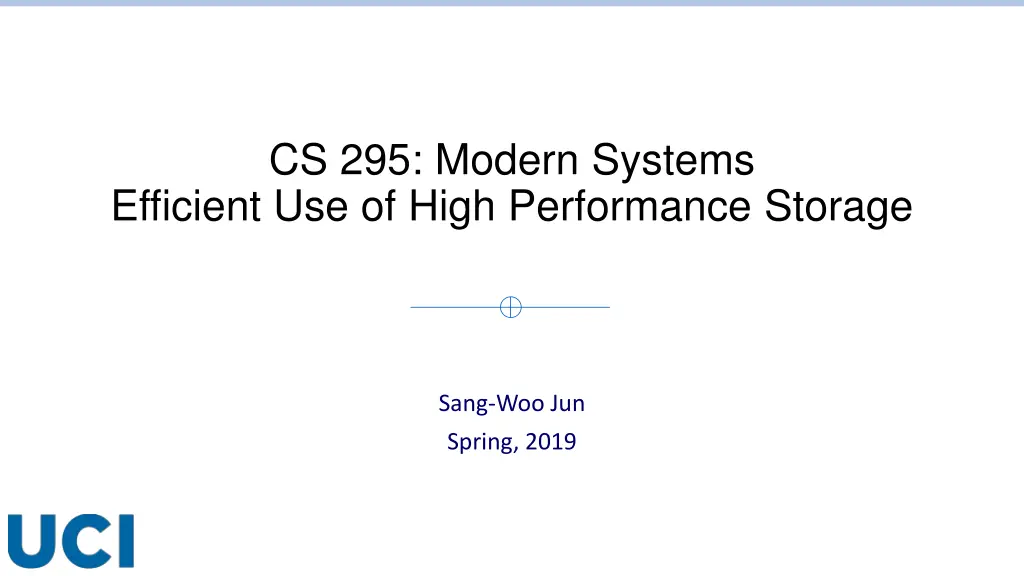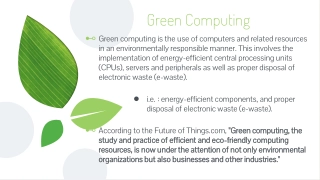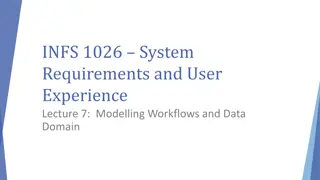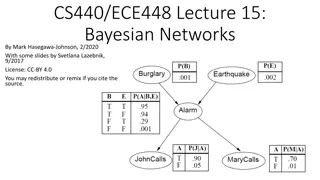
Efficient Use of High Performance Storage in Modern Systems
Explore the efficient use of high-performance storage in modern systems, covering topics like queue depth management, page caching in Linux, and asynchronous I/O options such as POSIX.AIO and Linux kernel libaio. Learn about optimizing storage performance and improving system efficiency.
Download Presentation

Please find below an Image/Link to download the presentation.
The content on the website is provided AS IS for your information and personal use only. It may not be sold, licensed, or shared on other websites without obtaining consent from the author. If you encounter any issues during the download, it is possible that the publisher has removed the file from their server.
You are allowed to download the files provided on this website for personal or commercial use, subject to the condition that they are used lawfully. All files are the property of their respective owners.
The content on the website is provided AS IS for your information and personal use only. It may not be sold, licensed, or shared on other websites without obtaining consent from the author.
E N D
Presentation Transcript
CS 295: Modern Systems Efficient Use of High Performance Storage Sang-Woo Jun Spring, 2019
Queue Depth and Performance For high bandwidth, enough requests must be in flight to keep many chips busy o With fread/read/mmap, need to spawn many threads to have concurrent requests o Traditionally with thread pool that makes synchronous requests (POSIX AIO library and many others) Billy Tallis, Intel Optane SSD DC P4800X 750GB Hands-On Review, AnandTech 2017
Some Background Page Cache Linux keeps a page cache in the kernel that stores some pages previously read from storage o Automatically tries to expand into unused memory space o Page cache hit results in high performance o Data reads involve multiple copies (Device Kernel User) o Tip: Write 3 to /proc/sys/vm/drop_caches to flush all caches Page cache can be bypasses via direct mode o open syscall with O_DIRECT o Lower operating system overhead, but no benefit of page cache hits o Useful if application performs own caching, or knows there is zero reuse
Asynchronous I/O Many in-flight requests created via non-blocking requests o Generate a lot of I/O requests from a single thread Storage Host Synchronous Asynchronous with queue depth >= 7
Asynchronous I/O Option 1: POSIX AIO library o Creates thread pool to offload blocking I/O operations Queue depth limited by thread count o Part of libc, so easily portable o Can work with page caches Option 2: Linux kernel AIO library (libaio) o Asynchrony management offloaded to kernel (not dependent on thread pool) o Despite efforts, does not support page cache yet (Only O_DIRECT) o Especially good for applications that manage own cache (e.g., DBMSs)
Linux Kernel libaio Basic flow o aio_context_t created via io_setup o struct iocb created for each io request, and submitted via io_submit o Check for completion using io_getevents Multiple aio_context_t may be created for multiple queues o Best performance achieved by multiple contexts across threads, each with large nr_events o Multi thread not because of aio overhead, but actual data processing overhead
libaio Example Create context Send request o Arguments to recognize results Poll results o Recognize results with arguments
Significant Performance Benefits! Typically single thread can saturate NVMe storage o If the thread is not doing any processing Let s look at performance numbers o Surprisingly few applications use libaio, but many do
Data Structures for Storage Most of what we learned about cache-oblivious data structures also work here
B-Tree Generalization of a binary search tree, where each node can have more than two children o Typically enough children for each node to fill a file system page (Data loaded from storage is not wasted) o If page size is known, very effective data structure Remember the performance comparison with van Emde Boas tree Brodal et.al., Cache Oblivious Search Trees via Binary Trees of Small Height, SODA 02
B-Tree Quick Recap Self-balancing structure! Insertion is always done at a leaf o If the leaf is full, it is split o If leaf splitting results in a parent overflow, split parent, repeat upwards o If root overflows, create a new root, and split old root Tree height always increases from the root, balancing the tree
B-Tree Quick Recap Deletion is also always done on the leaf o If leaf underflows (according to a set parameter), perform rotation to keep balance Rotation always maintains balance o If left sibling has enough children, take largest from it Element separating siblings in the parent is moved to current node to separate the new child o If right sibling has enough children, take largest from it The same o If no siblings have enough children, merge two siblings Remove the separating element in the parent. If this causes an underflow, repeat rotation at parent
B-Tree Quick Recap Rotation Dr. Fang Tang, CS241: Data Structures and Algorithms II, 2017
B+Tree B-Tree modified to efficiently deal with key-value pairs Two separate types of nodes: internal and leaf o B-Tree had elements in both intermediate nodes and leaves o Internal nodes only contain keys for keeping track of children o Values are only stored in leaf nodes o All leaves are also connected in a linked list, for efficient range querying-
Implicit B+Tree An implicit tree is when the structure of the tree is implicitly determined from the layout in memory o For example, an implicit binary tree can be represented as an array, where elements are laid out in breadth-first order o Wasted space if tree is not balanced o B-Tree and variants are self-balancing Implicit B+Tree node uses less memory o Useful for when data is in storage, but index is in memory o Useful when data is static! opendatastructures.org
Log-Structured Merge (LSM) Tree Storage-optimized tree structure o Key component of many modern DBMSs (RocksDB,Bigtable,Cassandra, ) Consists of mutable in-memory data structure, and multiple immutable external (in-storage) data structures o Updates applied to in-memory data structure o In-memory data structure regularly flushed to new instance in storage o Lookups must search the in-memory structure, and potentially all instances in storage if not
Log-Structured Merge (LSM) Tree In-memory: mutable, search-optimized data structure like B-Tree o After it reaches a certain size (or some time limit reached), flushed to storage and starts new External component: many immutable trees o Typically search optimized external structure like Sorted String Tables o New one created every time memory flushes o Updates are determined by timestamp, deletions by placeholder markers o Search from newest file to old Like clustered indices Alex Petrov, Algorithms Behind Modern Storage Systems, ACM Queue, 2018
Log-Structured Merge (LSM) Tree Because external structures are immutable and only increase, periodic compaction is required o Since efficient external data structures are sorted, typically simple merge-sort is efficient o Key collisions are handled by only keeping new data
Some Performance Numbers Data from iibench for MongoDB Small Datum, Read-modify-write optimized, 2014 (http://smalldatum.blogspot.com/2014/12/read-modify-write-optimized.html)
Bloom Filter Probabilistic data structures to test if an element is a member of a set o Not actually storage-aware algorithm Maintain a relatively small m array of bits o Insert: use k hash functions and set all hashed locations to 1 o Check: use k hash functions, if a hash location is not 1, the element definitely does not exist in the set Effective with even small m False positives, and becomes less useful with more insertions Source: Wikipedia




















